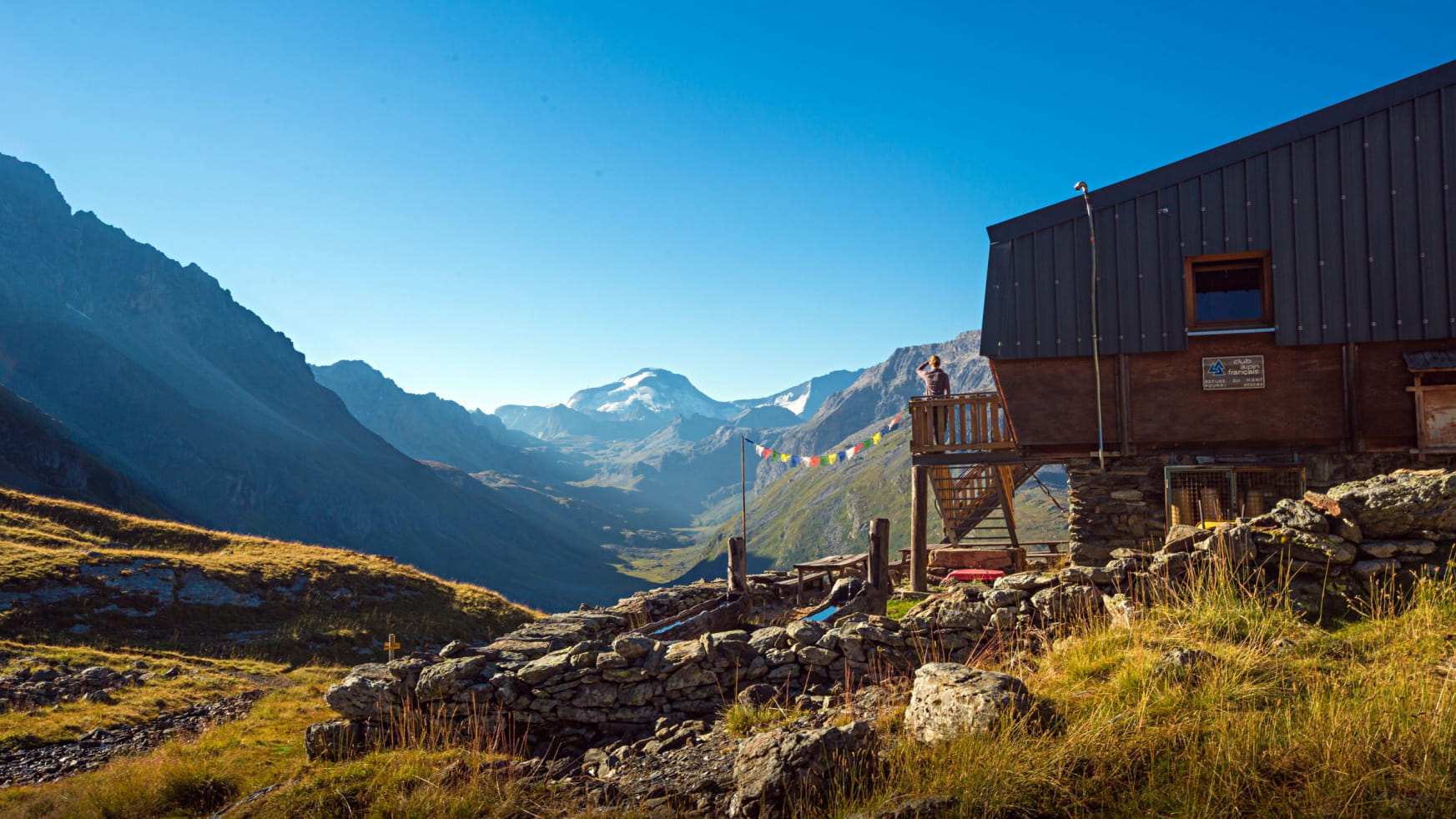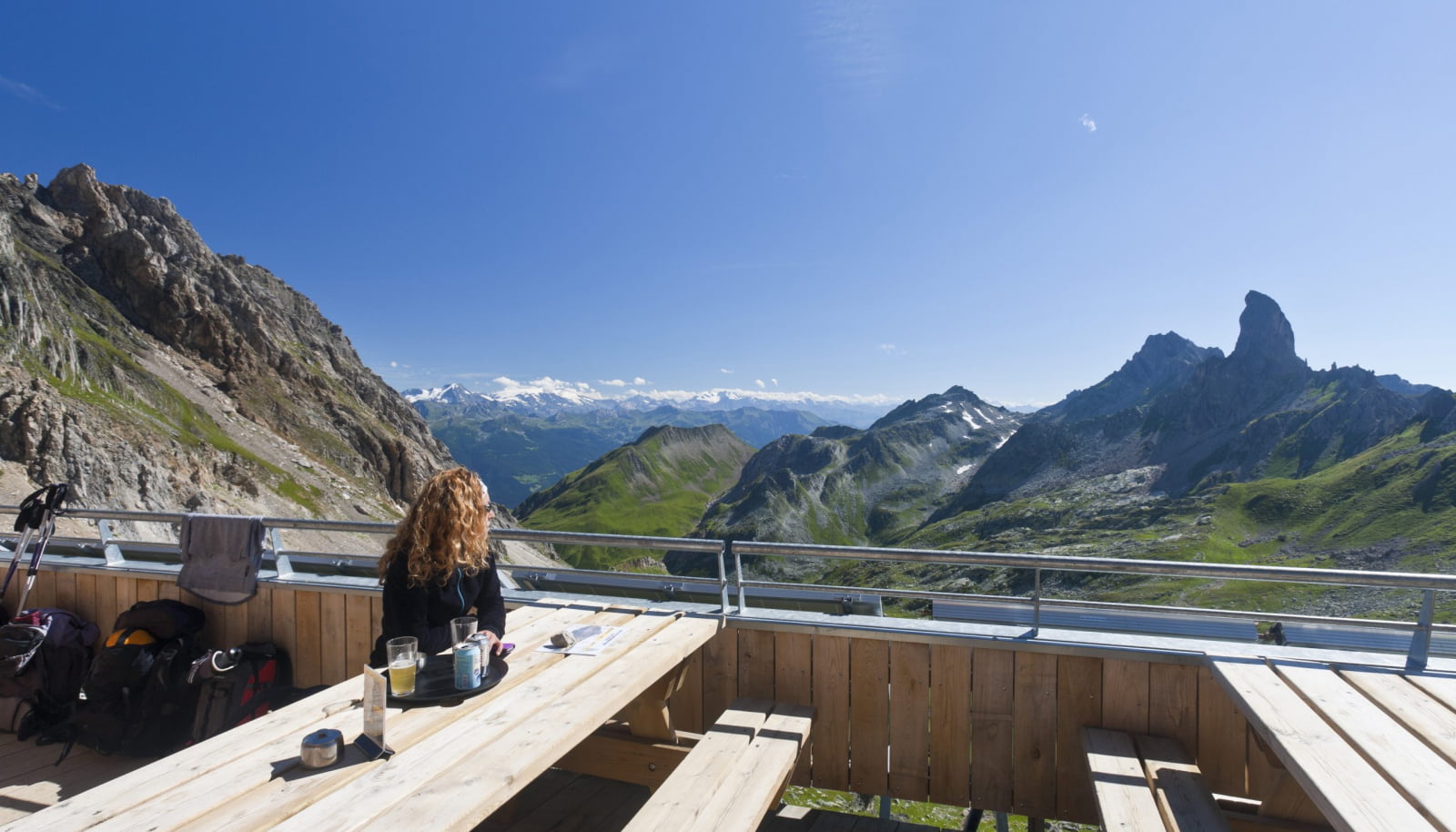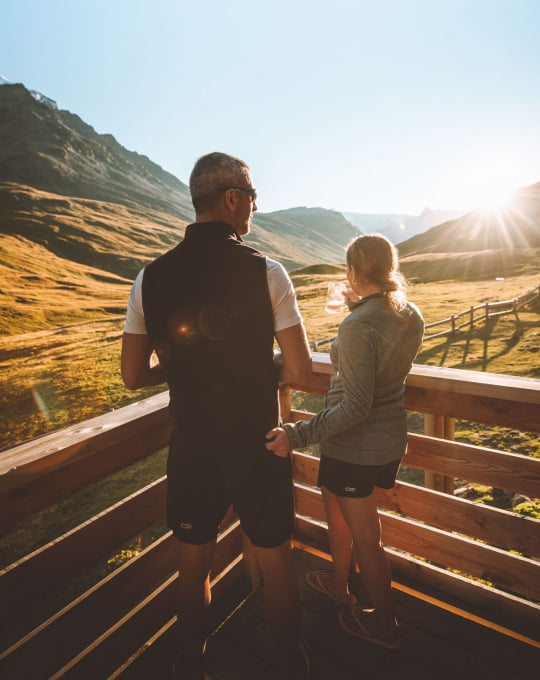- Hiking
Crossing diverse paths in mountain refuges

CLOSE BY OR FAR OFF
To reach them, you must walk. Long hours or just a bit. With simple trekking shoes or full mountaineering gear. Whether you are experienced or a rookie hiker on the trails, have robust or pint-size legs, refuges are havens of peace surrounded by nature.
There isn’t just one, but several types of refuges,’ states Jacques Pietu, vice-president of the FFCAM.*.
Several are very easy to access via a 15-minute hike, whilst others require five hours of walking and equipment. Many have been renovated and offer separate bunks and hot showers, although others have not been worked on and remain more rustic
Because they rely directly on their environments, refuges reflect the activities that take place in their territories.
In the Mont Blanc mountainsides, the accommodation is typical of mountaineering. The Chablais, Aravis, Tarentaise, Vanoise, and Maurienne ranges see lots of trekking and they are accessible to everyone.



THE CARETAKER
Although unsupervised refuges exist—often an isolated hut with spartan comfort—most refuges have character, seen in the tenaciousness the caretakers bring to their intense and difficult jobs.
Two elements define a refuge: the building with its natural surroundings and the caretakers, who leave their mark through the welcome, food, and activities’, Jacques Pietu adds.
Taking off your rucksack within the stone and wooden walls means a stopover in a world where we shake up our frame of references and habits. We share a room and eat at the same table here; neither power nor water appears out of nowhere.
The caretaker plays an educational role in raising awareness of environmental issues.
By coming to a refuge, we come in direct contact with the problems linked to energy production, water supply, and waste. So, there is a real strong informational side.
Conscientious of the importance of raising environmental awareness within the mountains, all of the players in the tourist industry give refuges centre stage in their policies.
The local and regional authorities play an active role in the restoration and existence of the refuges because the decision-makers know that mountain trekking holidays would not exist without refuges. They are essential for the development of mountain tourism’, Jacques Pietu emphasises.
Accessible, comfortable, and welcoming, refuges have everything they need to win us over—including for kids, who, after discovering the wonder of spending a night at high altitude with their classmates, will often bring their parents to the hut high above.
Magazine Emotions n°13 / Marie Paturel - YPM

DID YOU KNOW?
When you set out on a summertime trekking holiday on the trails, you should reserve places in the refuges on your itinerary ahead of time.
